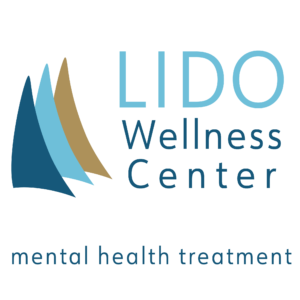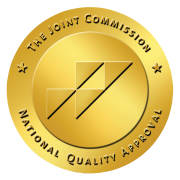What Is ARFID?
Understanding and Overcoming Avoidant/Restrictive Food Intake Disorder
When people talk about eating disorders, they usually are referring to the ones most people are familiar with.
Anorexia: extreme food restriction, intense fear of weight gain, and a distorted body image.
Bulimia: cycles of binge eating followed by purging through vomiting, laxatives, or excessive exercise to avoid weight gain.
Binge Eating: eating large quantities quickly, usually followed by shame.
But another disorder is lesser known but can be just as devastating.
Avoidant/Restrictive Food Intake Disorder: This is an eating disorder in which someone avoids certain foods in an extreme manner, which can lead to nutritional deficiencies.
What is ARFID—Avoidant/Restrictive Food Intake Disorder?
You might think you are dealing with a picky eater if you are unfamiliar with ARFID. But the reality is a more complex mental health issue. It has little to do with taste buds and what a person likes.
Someone with this condition will find themselves only able to eat a narrow range of foods and avoid large swaths of food groups.
Imagine someone who avoids most fruits, vegetables, and meats. They eat only white bread, some cheese, and rice. This person will likely experience extreme anxiety at the thought of eating anything outside of these strict parameters. Over time, this kind of eating would result in malnutrition.
And the issues are more profound than just not liking certain foods.
But why does this happen? Let’s dig in.
Why Does ARFID Happen?
Just like any mental health issue, the reasons someone might develop ARFID are complex. There is not going to be a specific situation or reason. And each person diagnosed with this disorder will have a unique experience.
Some people develop food sensitivities because of a traumatic experience with food, such as a choking incident or severe food sickness. Some people have food sensitivities to everything from colors to textures. Of course, this can be concurrent with other anxieties or disorders, which amplifies the issue.
The Brain and ARFID
Humans have one thing in common: our brains try to help us avoid pain, harm, or discomfort. And sometimes, a person’s brain can go into overdrive on this. Indeed, extreme anxiety is an example of this happening.
But if you once had a life-threatening experience that involved choking on a carrot, your internal system is going to begin to warn you to avoid carrots.
The Real-Life Impact of ARFID
As you can see, living with ARFID isn’t just a quirky eating habit. Certain foods or food groups elicit a mental and physiological response from the person who suffers from it. Since eating happens every day, all day and many social situations also include it; life can be overwhelming.
it’s a daily struggle. Imagine navigating a world full of food when most of it feels off-limits. Social gatherings become stressful, and dining out is an obstacle course of anxiety. Beyond those things, depending on the foods, you may have nutritional deficiencies that can lead to several issues.
Diagnosing ARFID
The key to a diagnosis of ARFD is persistent patterns that result in nutritional deficiencies. Significant weight loss could also be part of the decision factor or simply how your relationship with food impacts your typical psychological health.
Does it ruin your life?
Treatment for ARFID
The good news is that ARFID is treatable.
Cognitive-behavioral therapy (CBT) is the cornerstone of mental health techniques that help people change their relationship with food.
Here are a few ways that CBT can help if you or a loved one are experiencing Avoidant/Restrictive Food Intake Disorder:
- Identifying Negative Thoughts: The first step in CBT is recognizing the negative thoughts that fuel food avoidance. These might include irrational fears about choking, contamination, or negative past experiences related to food.
- Behavioral Experiments: CBT often includes behavioral experiments where people gradually expose themselves to feared foods.
- Coping Strategies: CBT also equips individuals with coping strategies to manage anxiety and stress around eating. These strategies include relaxation techniques, mindfulness, and other routines that can help a person manage their approach to eating.
Exposure Therapy
For those whose ARFID is tied to specific traumas or phobias, exposure therapy can be incredibly effective. This approach involves:
- Gradual Exposure: Exposure therapy works by gradually and systematically exposing individuals to the foods they fear in a controlled and supportive environment.
- Building Tolerance: By slowly increasing the exposure, individuals build tolerance and reduce anxiety responses. For instance, someone afraid of choking on solid foods might start with pureed versions, then move to softer solids, and eventually more textured foods.
- Positive Reinforcement: Throughout the process, positive reinforcement plays a crucial role. Celebrating small victories and acknowledging progress helps to build confidence and motivation to continue the therapy.
Medical Monitoring
Given the risk of nutritional deficiencies, regular medical check-ups are vital for a person dealing with ARFID. These visits help monitor physical health and ensure that any deficiencies are addressed promptly.
While ARFID can feel overwhelming, it’s important to remember that with the right support, recovery is possible.
Getting Help for ARFID
The journey might be challenging, but every small step forward is a victory. Whether you’re personally affected by ARFID or supporting someone who is, know that understanding and patience go a long way.
If you want to talk more about ARFID, general eating disorders, or any other mental health condition, contact us at Lido Wellness Center in Newport Beach California: 949-541-8466.


